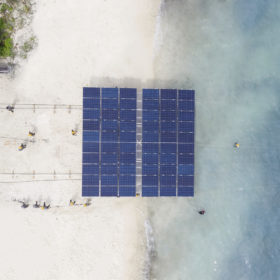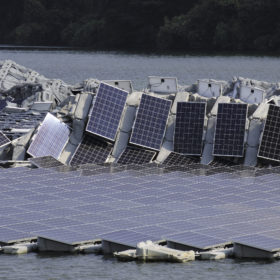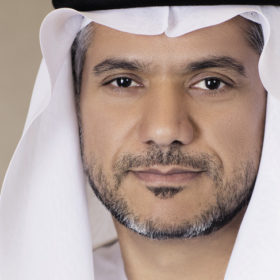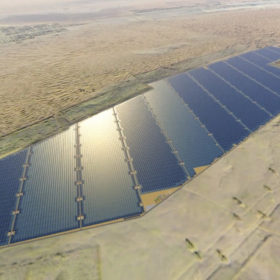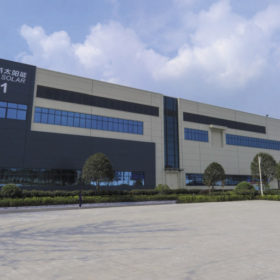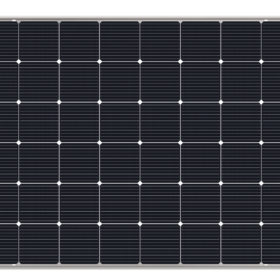A seaborne alternative to burnt cash
Floating PV has matured quickly, but while the opportunity of solar on the sea may appear immense, there is nothing trivial about the challenges posed by salinity, wind, and waves. However, technical and financial solutions are appearing on the market, giving small island communities a chance to reduce their reliance on polluting diesel.
Don’t throw caution to the wind
Japan’s Ministry of Economy, Trade and Industry (METI) has opened a formal investigation into the exact failure mode behind the destruction at the Yamakura Dam floating PV installation. In the end, the ministry seeks to draw up a plan to revamp not just the dam, but also the arrays that are still intact. This is a learning exercise that should be closely followed, as floating PV is enjoying growing popularity.
‘The solar price is getting low … we will do more’
The 1.177 GW Noor Abu Dhabi made headlines for its vast scale and low tender price. And it’s just the beginning, says Awaidha Murshed Al Marar, the chairman of Abu Dhabi’s Department of Energy.
A gulf of change
The adoption of solar across the Middle East is occurring at widely ranging rates among the various nations. The region is now delivering significant demand to solar developers, EPCs and manufacturers, while also setting records for low PV prices. But is it enough to show genuine leadership, and turn the tide on rising sea levels and a hotter global climate?
The hidden contest of the cell makers
Predicting which technological pathway will dominate in solar cell production is somewhat of a fool’s errand. A battle is currently underway between several of solar manufacturing’s big guns regarding both wafer size and p-or-n-type technology, and the outcome remains to be seen.
The way to the TOPCon
TOPCon cell technology has become one of the two leading next-generation options after mono PERC. But for the n-type architecture to truly become a rival to PERC, high-quality and cost-effective production technologies must become settled.
pv magazine test December 2019 results
The first chart to the right provides the meteo station data (irradiance and ambient temperature) for December 2019. Monthly energy yield data for the July-December 2019 period are given in the second table below. The second chart to the right shows the total energy yield of all products for December 2019.
Building Europe’s battery business
In just three years, Northvolt has progressed from a startup to become Europe’s response to the Asian dominance of global battery manufacturing. pv magazine investigates why Northvolt is setting up units in Sweden, Germany, and Poland, what the firm’s goals are, and how it is attempting to achieve them.
New markets for old batteries
The increased urgency for the automotive industry to deal with the disposal of EV batteries in the mid-term future will act as a catalyst for the emerging second-life battery market, writes Abhishek Sampat, Principal Analyst at Delta-EE. Automakers, and potentially third parties, are expected to exploit new value streams and a second-life market is predicted to drive down costs for stationary energy storage, with little to no compromise in quality to the end user.
sonnen goes local
Australia’s strong residential rooftop PV market segment has long been seen as ripe for the picking for battery storage suppliers. But things have been somewhat slow to develop, due to the capital outlay and hangovers from former rooftop subsidy schemes. This hasn’t stopped Germany’s sonnen from setting up battery assembly at a recently defunct car factory in South Australia, which sonnen Australia’s CEO Nathan Dunn sees as a good news story for the sector.
